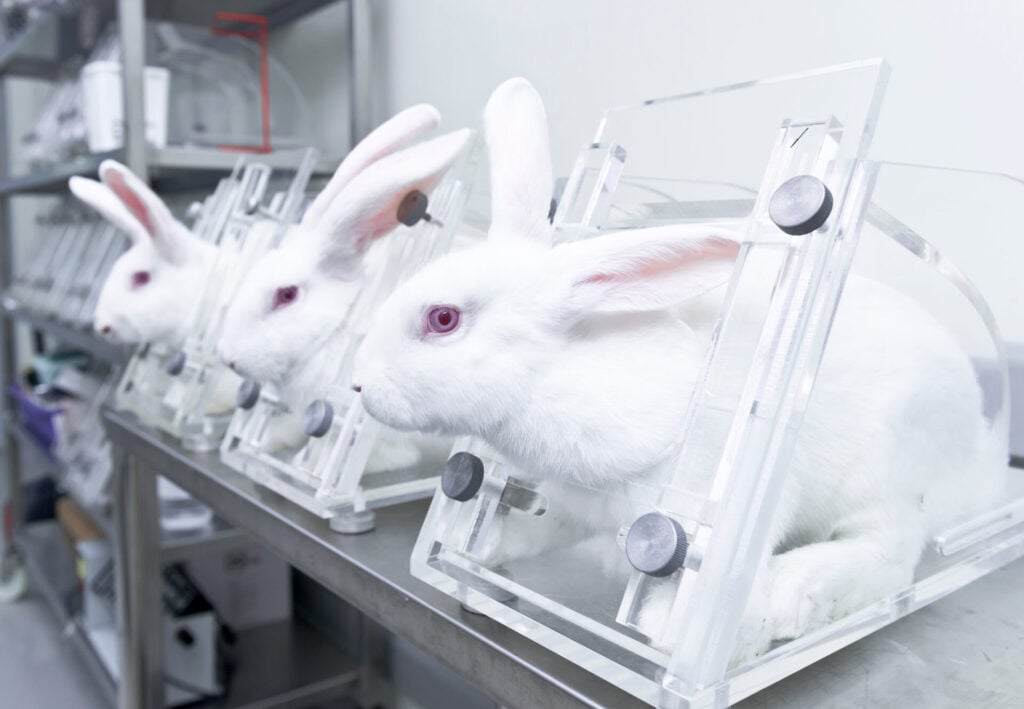If everything goes to plan, Ben Lamm will become one of the most talked about people on the planet in 2028 – not that he’s in it for fame or recognition. Ben is founder and CEO of Colossal, a unique start-up with an incredible mission. He’s set on bringing the woolly mammoth back to life and he’s hoping the first calf will be born in four years’ time. If it happens it will be an event as significant as the first man walking on the moon, he believes.
‘It will not be about Colossal or me. It will be something we will all share together, like the moon landings,’ he tells The Ethicalist. ‘I hope that there will be a sense of wonder and excitement and an understanding at that point that we have developed the technology to undo all the sins of the past. Hopefully it will inspire the next generation of biologists and geneticists. It will be a moment for humanity.’
While comparisons to the Jurassic Park movies are inevitable, Ben and the team at Colossal are working within the realms of science, rather than science fiction.
Ben’s enthusiasm for the task is infectious. And it is not as far-fetched as it may first appear. While comparisons to the Jurassic Park movies are inevitable, Ben and the team at Colossal are working within the realms of science, rather than science fiction.
The Science Of De-extinction
Using cutting-edge genetic engineering and artificial intelligence, it aims to bring back several lost species in a process it calls ‘de-extinction’. The first resurrected species will be the woolly mammoth, which died out around 4,000 years ago. After that comes the dodo, which went extinct around 1690, and the Tasmanian tiger, or thylacine, which may have survived into the 1980s in the wild but hasn’t been seen since the last known specimen died in a zoo in 1936.
The company is already making significant strides towards the 2028 deadline. Earlier this month it revealed that it has successfully converted cells from Asian elephants into induced pluripotent stem cells (iPSCs), which are cells that can be ‘programmed’ to turn into other types of cells. Scientists at Colossal now plan to convert these iPSCs into egg and sperm cells into which selected genetic traits from mammoth genomes will be generated which can then be used to create an elephant that biologically mimics a mammoth.
Ben explains that the process Colossal scientists will use is the reverse of the technique used to bring back the dinosaurs in the Jurassic Park movies.

‘The films did a good job of educating the public about genetic engineering,’ he explains, ‘but you cannot bring back dinosaurs – there is no ancient DNA that goes back that far, fortunately for all of us. ‘In Jurassic Park they filled in the gaps in the ‘dino DNA’ with frog DNA and things like that. Colossal is doing the exact opposite. We are taking Asian elephant DNA and cells, then we use AI and software to understand the difference between the Asian elephant genome and that of the mammoth and we engineer those lost traits back in using a combination of gene editing techniques.
‘We have full DNA synthesis capability,’ Ben adds, ‘so we can engineer big pieces of the genome and swap them in. We have more than 60 mammoth genomes right now that we use to do genetic assembly.’
Ben says he is 100 percent certain that his team will be successful. ‘There are no real science gates that have to be overcome in order to make this work,’ he says. ‘We as humanity have all the technology. At Colossal we have a huge team working with the latest and greatest technologies. We are looking at how we can improve the different technologies to make de- extinction faster, more efficient and affordable as well as having a direct impact on conservation.’

Indeed, one of the main motivating factors to the work is saving critically endangered wildlife.
Saving the Red-List
Colossal’s long- term aim is to produce an de-extinction kit that comprises technologies along with techniques including biobanking, genomics and sequencing, the creation of artificial gametes and egg cells and even artificial wombs in which to grow animals. Added together these can all help boost the populations of Red- listed animals.
The company is already helping the northern white rhino and is the exclusive genetic rescue partner in a bid to save the species – there are only two females left with one founder line of male sperm. It is hoped that Colossal’s geneticists can genetically engineer additional genetic diversity into the white rhino genome to produce embryos that could create a viable offspring and add to the genetic diversity of the herd to create a sustainable population.
‘Tomorrow we could be growing 100 genetically diverse northern white rhino in bags in labs and then working with rewilding partners to successfully reintroduce them into herds.’
Ben Lamm, Colossal
‘That’s what we are doing today,’ says Ben. ‘But tomorrow we could be growing 100 genetically diverse northern white rhino in bags in labs and then working with rewilding partners to successfully reintroduce them into herds.’
‘I think our de-extinction toolkit will completely transform the face of conservation. We are like a free R&D company for conservation, if you like.’

Entrepreneur Ben, from Dallas, says he has always been interested in animals, biodiversity loss and climate change. He started Colossal after meeting George Church, a hugely influential geneticist who had the ambition of bringing animals back from extinction.
‘What was interesting for me was that this is really a systems problem and a technology problem,’ explains Ben. ‘It was a huge opportunity to build technologies that could also benefit conservation. Leveraging all the technologies we develop along the way for conservation is absolutely core to our mission.’
Advanced rewilding
Ben explains that one way to look at de-extinction is to consider it similar to modern day rewilding projects. The removal of species from ecosystems causes biodiversity loss and increases the speed at which ecosystems degrade, especially key species like mammoths or elephants or rhinos. Returning those species should create an opportunity to revitalise the ecosystem.
‘When you look at the successful rewilding of wolves in Yellowstone Park, what we saw very quickly was that the reintroduction of only 14 or 15 wolves after a 70-year gap had massive benefits to the ecology of the park,’ says Ben.
‘In Mauritius – where the dodo will be reintroduced – we are working with the Mauritius Wildlife Foundation on getting some of the islands ready to receive the dodo’
To this end Colossal has already begun to get agreements in place with partners in the locations where the first animals will be released.
‘We work with local governments, private landowners, indigenous groups and the public to make it successful,’ he explains. ‘Last year when we launched our Tasmanian tiger working committee we met with people from the aboriginal community in Tasmania, the local mayor’s office, the university and even industries like logging and we still meet quarterly.
‘In Mauritius – where the dodo will be reintroduced – we are working with the Mauritius wildlife foundation on getting some of the islands ready to receive the dodo. These are formal partnerships. We are assuming success in science and so we are beginning to have the conversations now.’

‘We have a conservation advisory board, and we have bioethicists as part of the company who help us think through all the applications. We work with 15 of the top conservation groups in the world. We try to take a transparent, collaborative, and very inclusive approach. Everyone has an opinion, and we try to run to critics, not away from them.’
The Price of Revival
The endeavour is not cheap. The company has so far raised $245m (AED 899.5m), which Ben believes is low for the impact it will make. It will probably have to raise more capital in the future, but a lot of the technologies being developed have applications for human healthcare, which makes them commercially valuable.
Part of Colossal’s business plan is to leverage the technologies it develops and ‘spin- out’ businesses on the path to de- extinction. Last year it spun-out its first tech company which raised over $30m (AED 110m) and is valued at more than $100m (AED 367m). It is a biology software platform that biotech companies are using for drug discovery and research institutes are using for cancer research. And there are already other companies in the development pipeline that will be gestated at some point.
Some critics might argue that extinction is part of evolution and dead species should remain dead. That we should concentrate on saving the animals we have, not reviving the ones we have already lost. But Ben’s arguments that the reintroduction of recently extinct species will revitalise ecosystems, and endangered animals will benefit from the new technology developed on the way, is compelling.
‘When we first started Colossal and began talking in earnest to investors the numbers quoted were that we would be losing up to 10 per cent of the planet’s biodiversity between now and 2050,’ he says. ‘In the few years since we started, it is now up to 50 per cent which is terrifying.’ Anything that helps arrest this slide is surely worth the effort.














